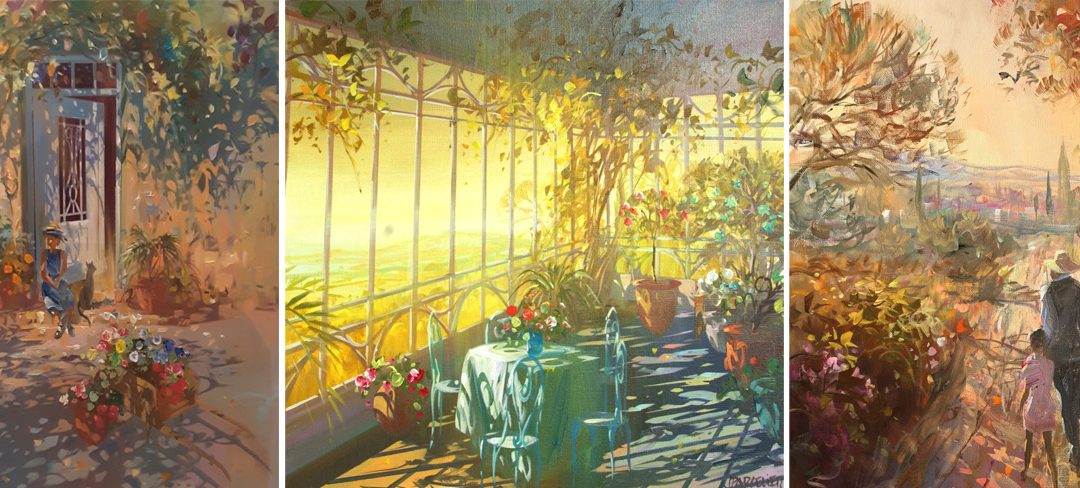
Aug 15, 2016
PARCELIER Laurent was born in 1962 in Auvergne.
After studying Applied Arts Duperré in Paris, he started in the comic. He published 8 albums at Casterman.
Meanwhile he began to devote himself to painting. It exclusively since 1996. Since that date, after several shows and exhibitions he exhibited in several galleries in France and the USA.
If we had two words, not one more set for the work of Laurent PARCELIER, it would be poetry and light. Which might be added, luxury, calm and voluptuousness, love of nature, quiet places and warm family atmosphere.
Poet of light, the poet is assured. Blink eyes slightly, place in front of one of his paintings and watch it at your leisure, you will only see sparks of light everywhere.
Laurent PARCELIER gives the impression of living in eternal holiday, between Provence and Luberon.
Happy and contemplative, flowing peaceful days with family in a beautiful house, basking in the sun of the south, nestled in a village clinging to the hillside, with the only horizon, the sky, the sea, a flowery plain, wooded mountains, offering bahous bald head to the caress of the day.
Impressionism :
As part of the largest movement of traditional French impressionist painting, and more specifically, the work of Parcelier is not less remarkable and very personal.
The visitor’s eye is first attracted by the graphic writing that comes from his experience in the world of comics. It was then struck by the meticulous and rigorous construction of his paintings. There is indeed a kind of spine that allows the color, broadcast by a multitude of light touches, not to get lost in a chaotic abstraction.
The works of Laurent Parcelier are part of many private collections throughout the world, and are well known to art lovers from France and Europe.
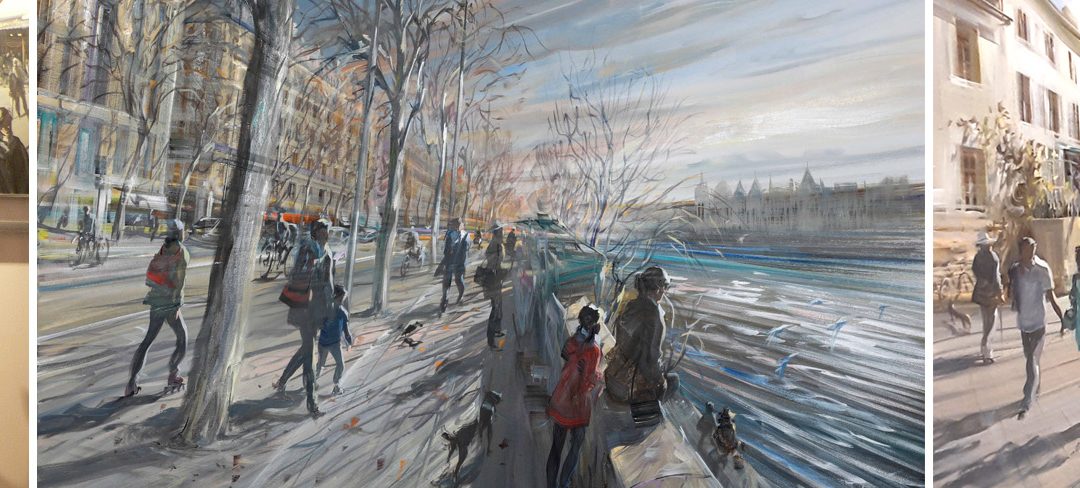
Aug 15, 2016
Born in 1962 in the Puy-de-Dôme, Kerdalo lived a childhood of Fine Arts. He spends his time drawing, coloring, painting, cutting, shaping.
Graduated from the School of Applied Arts in Paris, he started in the comic and Parallel to painting.
Since 1996, he devoted himself exclusively to painting.
Kerdalo offers us a rare and amazing writing that combines monochrome colors, to give us a full oil painting of life and lights …
Indeed, the work of Kerdalo not belong to any known phenomenon, it may be appropriate for him to invent the term modern impressionism to describe this new pictorial approach.
Animated with a rare gift for the treatment of light, Kerdalo register as the heir of the great Impressionists. With an experience of three decades, he has invented a truly innovative painting without ever leaving intoxicated by his success.
Kerdalo continues to use the most noble and most demanding because painted in oil, with a fluid touch that has no need of subterfuge thickness to be fully expressed.
In true ethnographer, Kerdalo tells the city by offering a pictorial evocation that fits perfectly in the twenty-first century. It is undoubtedly in the tradition of painters who believe that painting is a form of expression that can adapt to the times.
And as there is no lack of audacity, or ideas, the result is a measure of his immense talent. Present in many prestigious galleries in France, it is now moving into foreign galleries, its reputation is therefore well established in his country.
Kerdalo is a painter as one might think “hyper-realistic”, but his work is more personal. Marked by respect and the search for movement, he developed his own style. His subjects, mostly urban, are perfect to capture the moment as a still picture freezing animation of our cities.
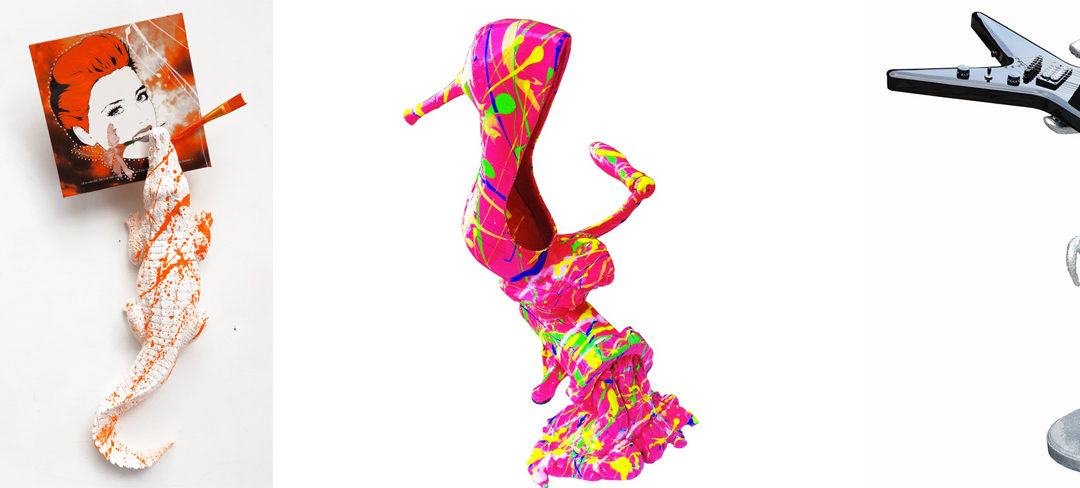
Aug 15, 2016
Mr Live is a visual artist born in 1968 in Lille.
Fascinated since childhood by the artists’ world and their works, Philippe Clairé gal is bored in his commercial costume.
During his meeting with the artist David Cintract his life takes a radical turn when the initiator of the free movement Pop said, “becomes the artist of your life.”
Thanks to a strong friendship between the two people and hard work, he passes the sculpture to painting. He became happy Mr Live.
POP FREE SPACE:
David and Mr Cintract Live
“Free Space Pop Concept is a place dedicated to the work of artist David Cintract. French contemporary artist and initiator of the movement “Free Pop” and more a movement: a state of mind (Lifestyle). It is inspired by current events, everyday, film, comics better mix his desires. It uses various techniques (photo, inclusion of other products, oil, acrylic …) and new technologies (digigraphie) that he mastered. The space is open mainly to professionals but also to individuals who wish to discover the works of the artist. The space also presents the artist “Mr Live” sponsored by David Cintract. Multidisciplinary, it creates fences with video, sound as well as sculptures. ”
Mr Live is a visual artist born in 1968 in Lille.
Fascinated since childhood by the artists’ world and their works, Philippe Clairé gal is bored in his commercial costume.
During his meeting with the artist David Cintract his life takes a radical turn when the initiator of the free movement Pop said, “becomes the artist of your life.”
Thanks to a strong friendship between the two people and hard work, he passes the sculpture to painting. He became happy Mr Live.
POP FREE SPACE:
David and Mr Cintract Live
“Free Space Pop Concept is a place dedicated to the work of artist David Cintract. French contemporary artist and initiator of the movement “Free Pop” and more a movement: a state of mind (Lifestyle). It is inspired by current events, everyday, film, comics better mix his desires. It uses various techniques (photo, inclusion of other products, oil, acrylic …) and new technologies (digigraphie) that he mastered. The space is open mainly to professionals but also to individuals who wish to discover the works of the artist. The space also presents the artist “Mr Live” sponsored by David Cintract. Multidisciplinary, it creates fences with video, sound as well as sculptures. ”
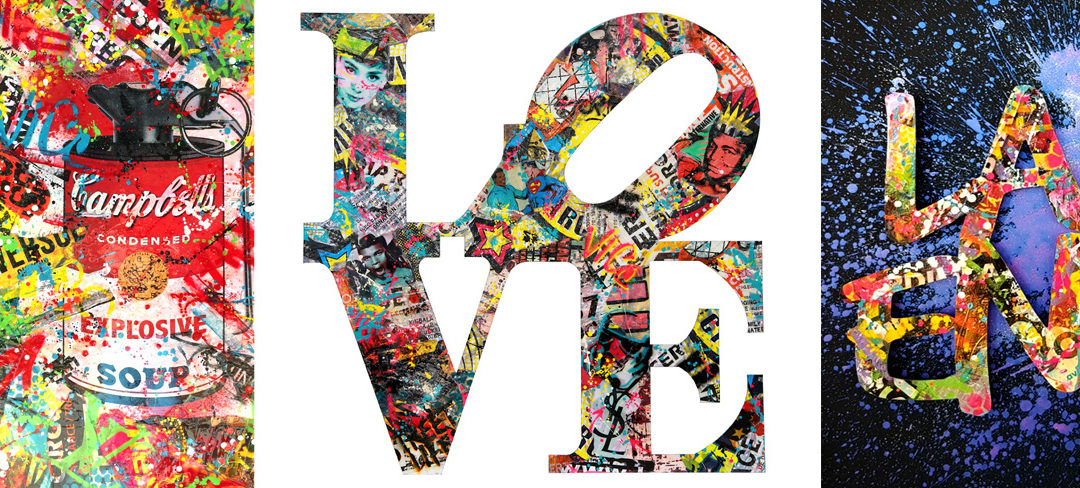
Aug 15, 2016
AIIROH is born in Narbonne in 1987, it is a French artist.
He paints and draws from a young age.
Working for some years as a graphic designer in France and Switzerland, Aiiroh draws inspiration from trends Pop Art, New Pop Art and Street Art.
Out of art school, it is oriented in the field of communication in order to become a graphic designer.
It was during this period that he decided to create these paintings using advertising or posters of the elements straight out of the street.
One of these early work consisted has to confront the dessinnée strip hero who inspired it since his childhood.
It diverts the image we may have of these characters.
In some of his works, the artiste AIIROH integrates brands to remind dependency that human beings consumer products.
The graphical power of these brands as it has an effect on our collective unconscious and on our aesthetic codes.
In line with its Pop-art predecessors, Airoh uses mixed and technical information, as affichisme, gluing crystals svarowsky, acrylic paint, stencil, freezing.
For the past three years, he is focusing on re-interpretation of iconic figures and pop symbols through posters he finds in the streets of Paris, Marseille, Lyon, Toulouse, Narbonne, next to his old graffiti “spots”.
He is a well-established artist in France, Switzerland, and USA.
The artist AIIROH is part of this new generation Neo Pop Art.
Neo Pop is not a new movement in itself but rather a resurgence of work on popular culture, and an accommodating means of classifying different artists that constitute it.
This path functions as the major entertainment media, which produce images and disposable icons, and trying to compete with them.
Yet the New pop differs in some respects from his senior. Society has changed, art too. Its artists seek to show how the negative side of cultural colonialism can be transformed into “strangely beautiful anomalies”. Their work is the result and the reflection of the society of globalized information.
Thus it is not to transform the aesthetics of everyday life into art but rather to demonstrate that art and consumerism, popular culture, are level and can coexist in the same image.
This current rejects the idea of a higher art to others, and wants to be close to the people and buyers, accessibility is his watchword
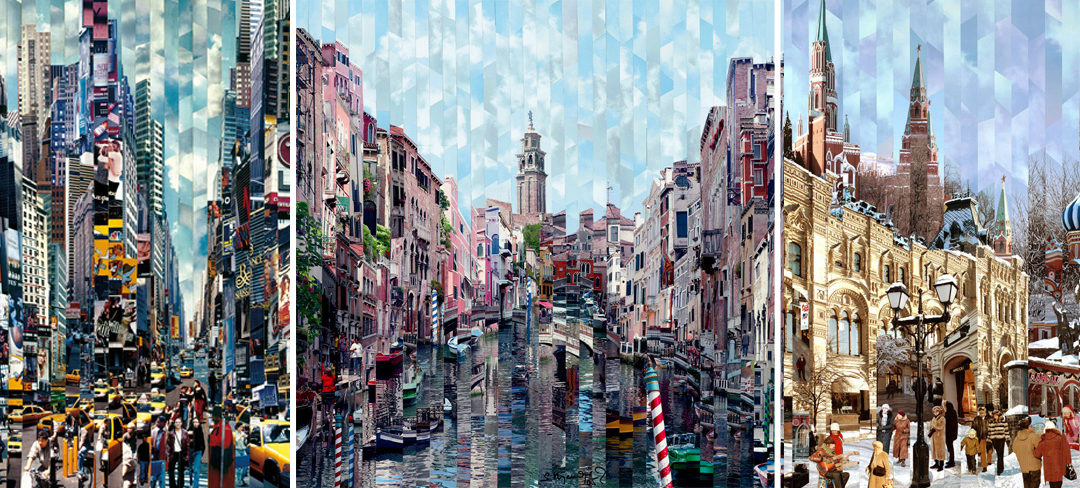
Aug 15, 2016
MENDJISKY
Serge Mendjisky was born in 1929 in Paris. His father, Maurice Mendjisky, was a painter of the School of Paris, this is how Serge acquainted with the world of Arts dice childhood. After completing his studies at the Beaux Arts in Paris, he soon became a recognized artist and exhibited in Europe, Japan and the United States. Already, he uses photography to make its preliminary studies in painting.
In 2000, he decided to use photography as the only means of expression. He borrows the collage technique to alter photographic images and articulate its multidimensional worldview. The multiple perspectives, expressed in his collages evoke clearly the analytical phase of Cubism. Pablo Picasso, Serge Mendjisky well known thanks to his father’s activities on the art scene at the time, told him that the actual Cubism would be fully achieved through photography. He always kept this vision in mind, and after many years of technical exploration, he found a way to question not only the appearance of the world, but also our perceptual behavior.
By decomposing and recomposing the backgrounds of some of the most famous cities of the world like New York and Paris, He creates new urban landscapes which question our perceptive faculties.
Volumes, lights and colors create different visual rhythms that establish new relations between time and space. Through the creative goal Serge Mendjisky Broadway becomes an explosion of colored lights, while the “Down Town” New York poetically waltz with a cello sounds. Recognizable cityscapes are redefined and reformulated reality becomes three-dimensional.
The work of Serge Mendjisky is represented in public collections as well as private, the one of the Museum of Modern Art in Paris, the Museum of Art in Philadelphia and the Museum of Fine Arts Pushkin in Moscow.
In 2014, Museum opens Mendjisky dedicated to ” School of Paris” in Paris.







